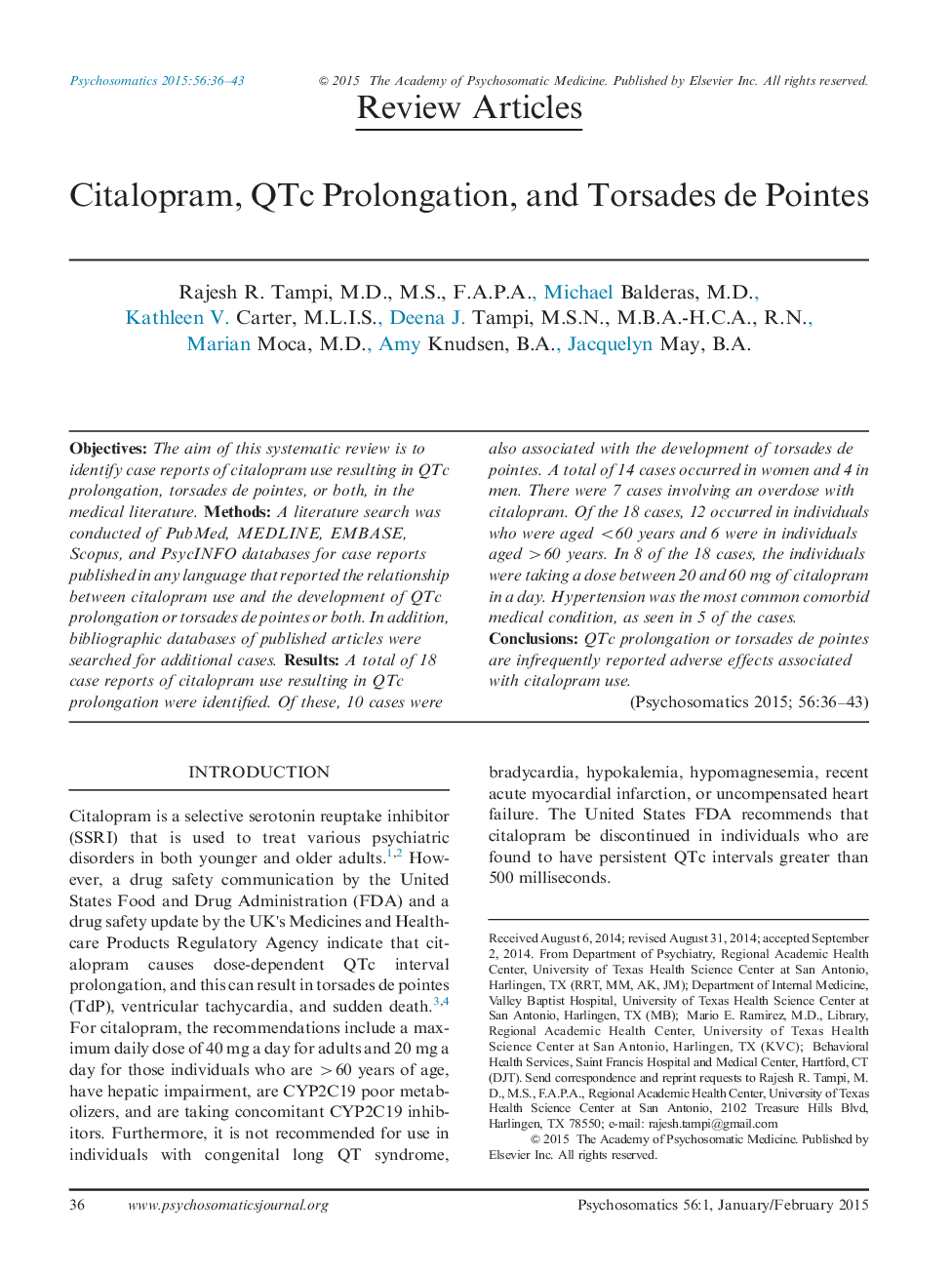| Article ID | Journal | Published Year | Pages | File Type |
|---|---|---|---|---|
| 337432 | Psychosomatics | 2015 | 8 Pages |
ObjectivesThe aim of this systematic review is to identify case reports of citalopram use resulting in QTc prolongation, torsades de pointes, or both, in the medical literature.MethodsA literature search was conducted of PubMed, MEDLINE, EMBASE, Scopus, and PsycINFO databases for case reports published in any language that reported the relationship between citalopram use and the development of QTc prolongation or torsades de pointes or both. In addition, bibliographic databases of published articles were searched for additional cases.ResultsA total of 18 case reports of citalopram use resulting in QTc prolongation were identified. Of these, 10 cases were also associated with the development of torsades de pointes. A total of 14 cases occurred in women and 4 in men. There were 7 cases involving an overdose with citalopram. Of the 18 cases, 12 occurred in individuals who were aged <60 years and 6 were in individuals aged >60 years. In 8 of the 18 cases, the individuals were taking a dose between 20 and 60 mg of citalopram in a day. Hypertension was the most common comorbid medical condition, as seen in 5 of the cases.ConclusionsQTc prolongation or torsades de pointes are infrequently reported adverse effects associated with citalopram use.
